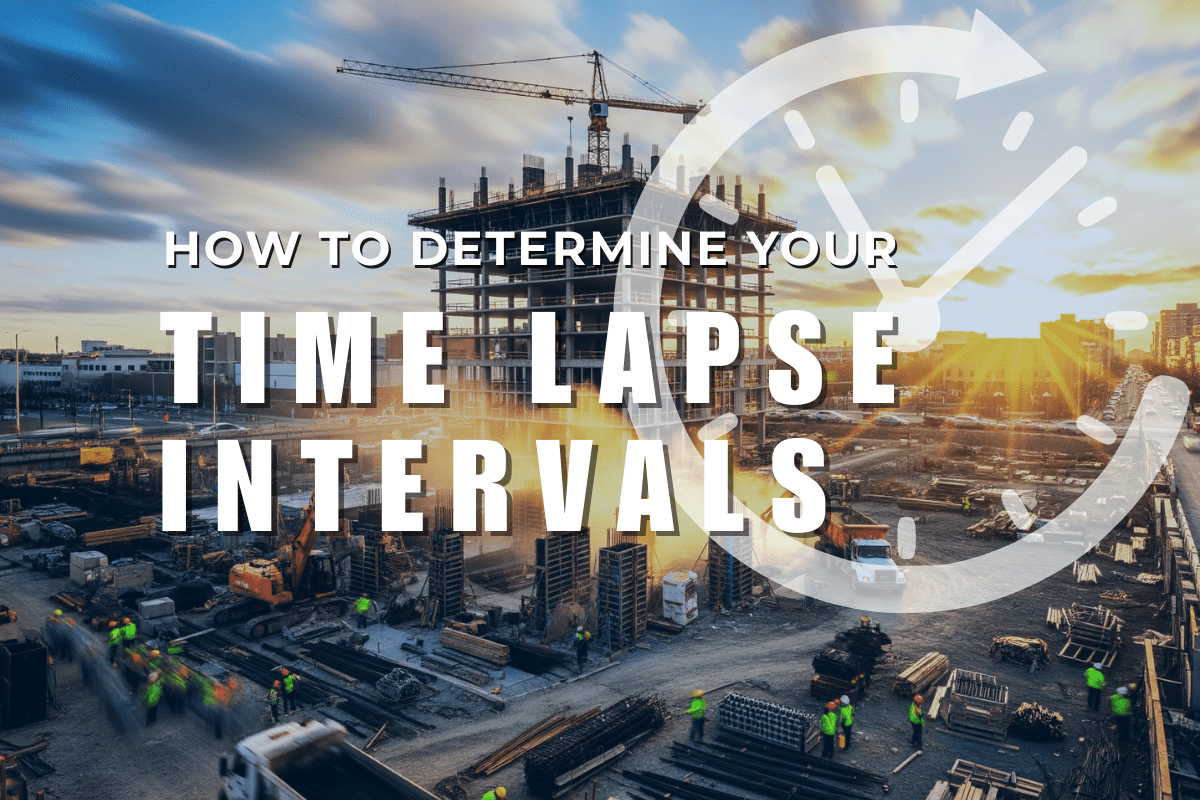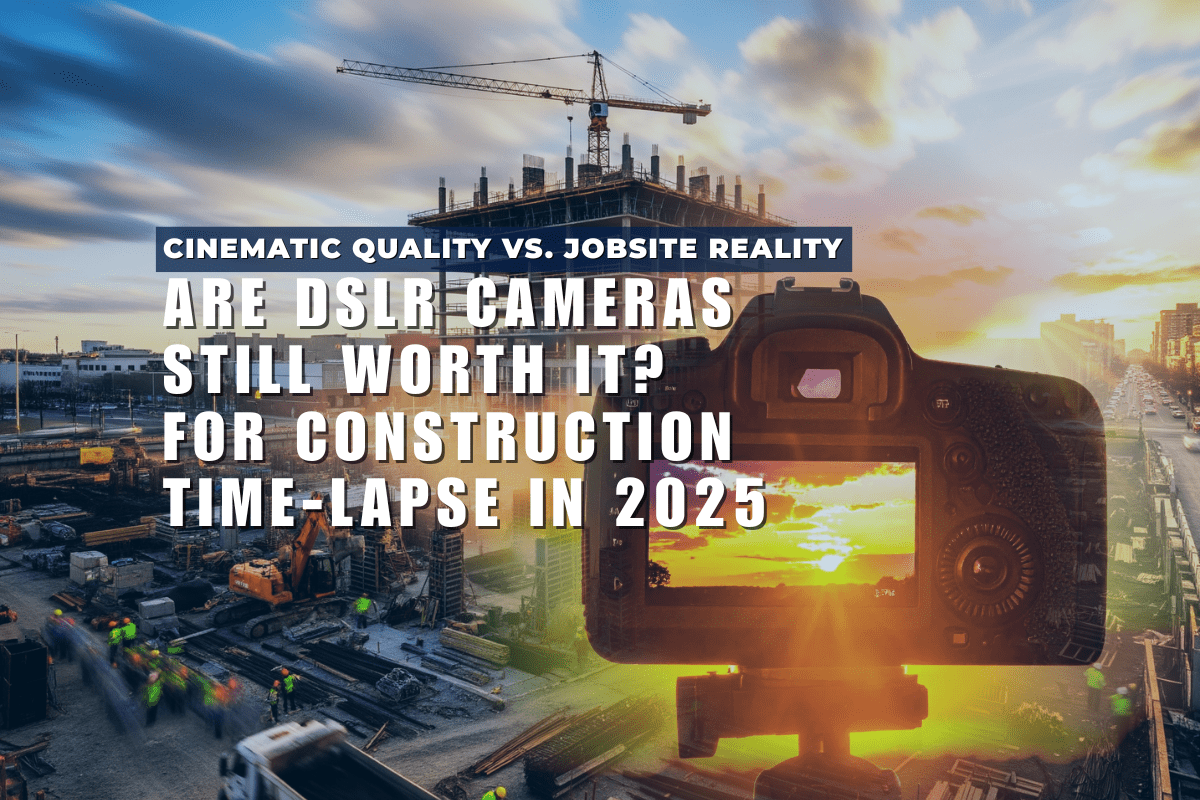Updated August 2025
Simply put, your interval should match the speed of action you want to capture. The interval determines the length of the final video and how smooth the motion appears. While the idea is simple, execution depends on several factors.
What to Consider Before Setting Your Interval
-
What event are you capturing?
-
How long does it last?
-
Where is it taking place, and what power is available?
-
How long should the final video be?
-
How fast is the action?
-
Are there “dead” periods with little change?
Event Duration and Type
A sunrise requires short intervals (1–3 seconds) to show the sun’s movement. A construction project spans months with uneven activity, often needing longer intervals (15–60 minutes). Faster intervals may be useful during high-activity phases such as demolition or crane lifts.
Location and Power
Power sources affect intervals. With AC, you can shoot frequently. Without it, many projects use solar enclosures. Even then, plan carefully to avoid overusing storage or power. Both DataLens and SolarUp systems connect toCloudX for automated uploads, AI-powered insights, and instant access to the latest site image.
Action Speed
Match interval to scene speed:
-
Fast action → short intervals for smooth motion.
-
Slow action → longer intervals still look natural.
-
Intentional “jerky” motion → longer intervals in fast-changing scenes.
Example: For construction, you might use 30–60 minutes during excavation, then 5 minutes during structural steel lifts.
Suggested Intervals by Application
-
1 second: Clouds, traffic, driving
-
3 seconds: Slower clouds, trees in wind, crowds
-
15–30 seconds: Sun movement, shadows
-
2–10 minutes: Growing plants, site activity phases
-
15–60 minutes: Long-term construction phases
Storage & File Management
Short intervals generate thousands of frames, which may be excessive. Long intervals risk a video that feels empty. Aim for a middle ground. Use CamDo’s Time-Lapse Calculator to estimate project length, storage, and power needs.
Low-Light Considerations
Time-lapse is designed to capture progress and storytelling, which most often happens in daylight conditions. DataLens, however, is equipped with strong low-light performance and a short-range IR illuminator, making it suitable for evenings and dim environments.
It’s important to note that time-lapse and security serve different purposes. Time-lapse cameras are optimized for producing consistent, high-quality imagery over time. Security cameras, on the other hand, are optimized for live monitoring and event detection, but they cannot deliver professional time-lapse sequences. Many projects use both systems in tandem to cover different needs: progress documentation and marketing on one side, and site security on the other.
Planning and Testing
Always test before committing to a long project. When in doubt, choose a slightly faster interval, you can speed up footage in post, but you can’t fill missing gaps.
Camera Options
-
GoPro HERO12: Durable, reliable, great for construction projects.
-
Sony RX0 II: Compact with strong image quality.
-
DSLRs: Higher cost, but with diminishing benefits for day-to-day documentation.
-
DataLens: Plug-and-play 4K, built-in cellular, strong low light, connects to CloudX.
-
SolarUp: Modular GoPro/Sony option for higher resolution and flexibility.
FAQ
Do I need 4K for construction time-lapse?
Yes. 4K allows cropping while keeping detail and manageable file sizes.
Can a camera run for months or years?
Yes, with solar or AC power and automated CloudX uploads, avoiding manual SD swaps.
Is DSLR worth it for construction documentation?
Often no. DSLRs cost more and add little ongoing benefit versus modern 4K systems.
Is GoPro HERO12 a good option?
Yes. HERO12 offers durability, quality, and reliability for long-term installs.
What about low light or night shots?
Time-lapse is daylight-first. DataLens includes strong low light and a short-range IR illuminator, but it is not a security system.




